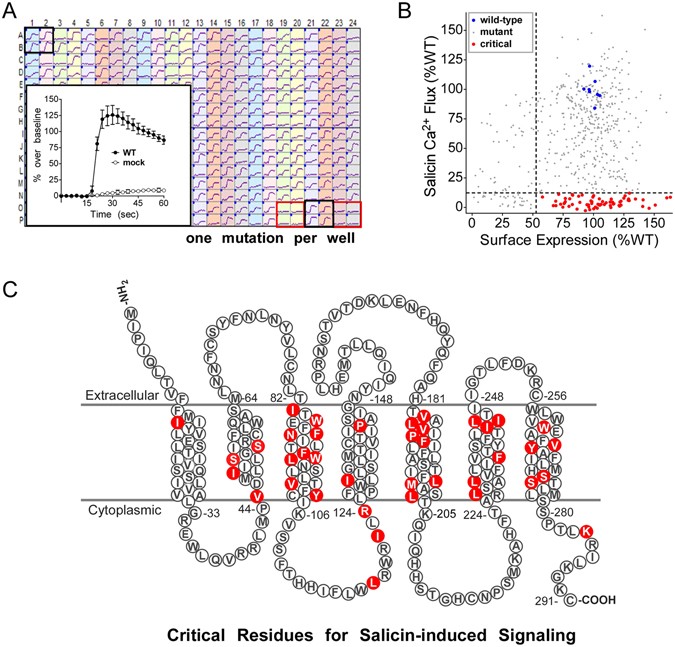Figure 1

Identification of residues critical for salicin-dependent signaling. (a) Calcium traces obtained from a representative 384-well plate of HEK-293T cells transfected with the TAS2R16 mutation library and stimulated with 3 mM salicin. Each library plate contained 8 positive control wells used for normalization of Ca2+ flux measurements (wild-type TAS2R16; black boxes) and 8 negative controls wells (non-specific vector; red boxes). Individual traces for positive and negative control wells are shown in the inset (average+/− standard deviation). (b) Plot showing TAS2R16 salicin-induced Ca2+ flux as a function of cell surface expression (detected by immunofluorescent detection of an N-terminal FLAG tag) for each clone in the TAS2R16 mutation library. Values are normalized to wild-type, shown in blue. Critical clones marked in red displayed less than 12% (mean of negative controls +3*SD) of wild-type TAS2R16 Ca2+ flux activity and greater than 53% (mean of positive controls - 3*SD) of wild-type TAS2R16 cell surface expression. (c) Diagram of TAS2R16 showing the location of residues whose mutations eliminated Ca2+ flux for salicin (i.e. flux <12%; highlighted in red) and gave expression on the cell surface at >53% of wild-type. TMs were predicted using TMHMM Server v. 2.0.
